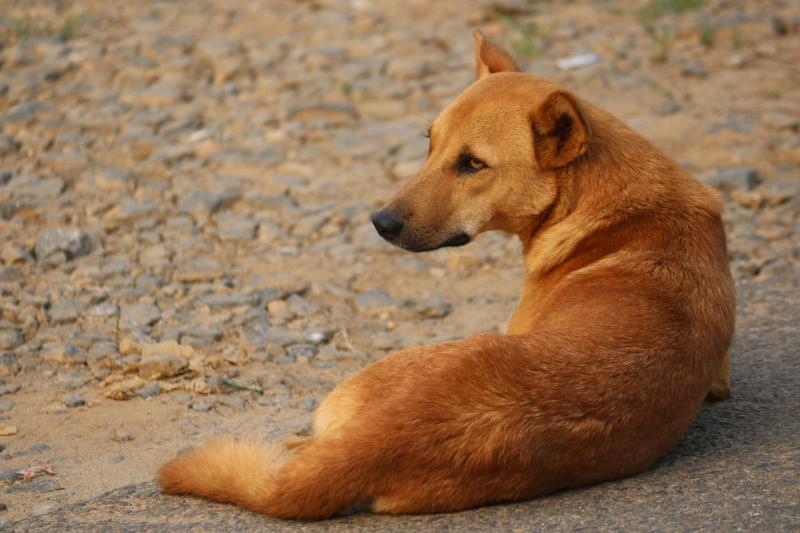
Study explores how free-ranging dogs forage food
In a country with millions of stray dogs, it is not uncommon to sight them digging into garbage dumps for food. Heartbroken at this, some of us may have fed these seemingly hungry souls a packet of biscuits or bread. However, having lived all their lives on the rough streets, ever wondered if these dogs prefer a specific type of food? Or, do they just gobble up anything that they find? What's a stray dog's way of thinking about food? A recent experimental study by researchers at the Indian Institute of Science Education and Research Kolkata (IISER Kolkata) has found some answers to these questions.
“Free-ranging dogs are primarily scavengers, which means that they have to eat what they find”, says Prof Anindita Bhadra from IISER Kolkata, whose group works on understanding the behaviour of free-ranging dogs in India.
In the current study, published in the journal Applied Animal Behaviour Science, Rohan Sarkar, a researcher in her Dog Lab, designed a few experiments to understand what street dogs preferred to eat when they scavenge for food. The study was partially funded by the Science and Engineering Research Board (SERB).
Being a stray in a city—a result of evolving with humans over thousands of years—is not easy. Most don't have their meals on a platter; their tastiest eatery is the garbage dump. "They face competition from other dogs and other species like cats, crows, cows, goats and rats in such dumps," explains Prof Bhadra. When life is so hard, can the dogs afford to be choosy while scavenging, or have they lost their preference for meat, to adapt to an arduous life?
An earlier study by Prof Bhadra and her group had set out to understand if dogs indeed have a preference, and found that they strongly preferred food that smells of meat. "They use a simple Rule of Thumb—if it smells like meat, eat it, which makes them efficient scavengers", says Prof Bhadra. In the current study, they designed experiments such that the dogs had to scavenge, as they do from garbage bins, rather than being offered food.
The experiments for the study were conducted for 15 days in twelve areas of two cities—Kolkata in West Bengal and Jamshedpur in Jharkhand. In each of these areas, they placed three boxes as substitutes for garbage bins, filled with regular, inedible garbage—plastic bags, cigarette boxes, dried leaves, flowers and other similar things. Hidden inside them were specific types of food—chicken and bread. The 'protein box' contained ten pieces of chicken along with the inedible garbage, while the 'carbohydrate box' had ten slices of bread mixed with the garbage. The 'mixed box', as the name suggests, had five pieces of chicken and bread, along with garbage.
The researchers let only one dog near the boxes at each trial, giving it a minute to explore the boxes and pick its food. They noted down what each of them chose to eat and if they showed any preferences. In all, they studied 175 dogs, of whom only 68 made contact with any of the three boxes.
The study found that the stray dogs seemed to have adapted to sniff out food that they can eat, and gobble as much as they could before being chased away. Although most of them chose to eat from the 'protein box' first, they did not refuse the others. In a minute, they could explore the boxes, forage for food in them, and eat as much as they could from all the boxes. The researchers believe that the choice of protein box as the first one helped maximise nutrition in the face competition. There was a particular hierarchy of food preference—the dogs favoured proteins over mixed food, which was liked over carbohydrates.
This behaviour of ranking foods observed in free-ranging dogs was similar to that in coyotes, a canid relative. The dogs were found to move on to other food sources only after they thought that the chicken pieces were no longer available. This trait, the researchers say, shows that the dogs were able to judge the quality and quantity of the food in a matter of seconds, thanks to their sense of smell. Perhaps, it is this street-wiseness that has helped them survive in areas dominated by us, without being pets.
“The findings mean that they have a ‘smart’ scavenging strategy, which makes them efficient at foraging,'' remarks Prof Bhadra. “We see that though the preference for meat is clear, they don't reject the bread, which also means that they can be quite flexible and will eat what they get to satisfy their hunger,” she details.
The researchers plan to further the study by looking at the foraging behaviour of stray dogs when in a group. “We are now studying if, in the presence of competitors, group members cooperate and share the food. It would also be interesting to carry out the same study in different habitats to see if the preference is manifested universally,” signs off Prof Bhadra.
This article has been run past the researchers, whose work is covered, to ensure accuracy.
